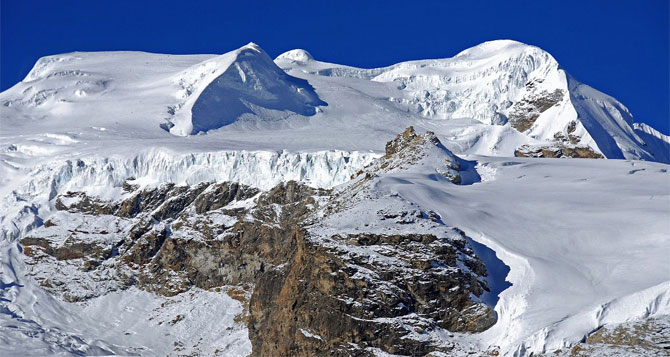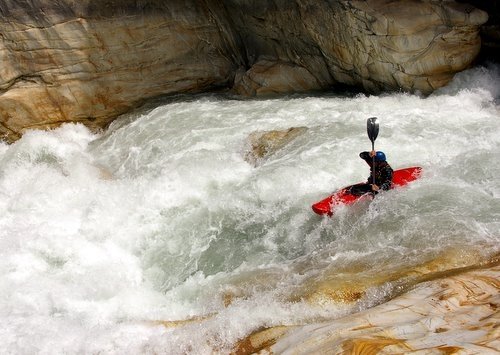Festivals in Nepal
Nepal is the ‘Land of Festivals’ with at least one part of the country celebrating a festival every month of the year. It offers visitors a valuable opportunity not only for having fun but gaining insight into various aspects of Nepalese culture. Most of the festivals herald different occasions that may be connected with the memory of the departed soul, to mark the beginning or end of the agricultural season, to mark special national events or family celebrations.
On the festival day the Nepalese take their ritual bath, visit the temple, worship different gods and goddesses, observe fasting and undertake feasting. The most important aspect of Nepalese culture is the religious harmony among different religious sects that co-exist peacefully since time immemorial.Some of the major and interesting festivals are presented below.
Maha Shivaratri (February):
Shivratri or the Night of Lord Shiva is observed in February. It is celebrated in honor of Lord Shiva, a Hindu god. A great religious fair takes place in the Pashupatinath Temple and thousands of people from all over Nepal and India visit the temple to worship Lord Shiva. On the first day of the festivals thousands of worshippers including Sadhus and Naked ascetics throng Pashupatinath Temple early in the morning.
Ghodejatra (February):
Ghode Jatra or horse festival is celebrated between February and March at Tundikhel in Kathmandu. It is one of the most exciting festivals celebrated by Nepalese army and thousands of people enjoy watching various army sports at Tundikhel. In other parts of the city, various deities are carried shoulder-high on Palanquin (khat) to the accompaniment of traditional music.
Lhosar (February):
The festival is most impressively observed by the Sherpa community. They organize folk sings and dances on this occasion. These dances can be seen in Khumbu, Helambu and other northern regions of Nepal and also at Bouddhanath in Kathmandu.
Holi ( Water Festival):
This colorful water festival is held in March. On this special occasion people smear each other with colored powder and splash water balloons with fun. The Chir pole is erected at the Kathmandu Durbar Square nicely decorated with colorful flags. At the end of festival, the chir is taken down and burnt.
Nepalese New Year (April):
The Nepalese New Year’s Day usually falls in the second week of April. The day is observed as a national holiday. The people celebrate it with a great pomp and show. On this occasion, Bisket carnival- is held in the city of Bhaktapur & Thimi.
Buddha Jayanti (April):
It is a great day for the Nepalese. This auspicious day falls on the full moon in the month of mid-April. People celebrate to commemorate the birth, enlightenment and death of Lord Buddha, the founder of Buddhism, more than 2500 years ago. At Swayambhunath, Boudhanath and Lumbini devout Buddhists gather to chant prayers and burn butter lamps.
Rato Machchendranath Rath Jatra(May):
This festival is the biggest socio-cultural event of Patan(Lalitpur). The wheel chariot of a deity known as Bungdyo or Rato Machchendranath is made at Pulchowk and dragged through the city of Patan in several stages till it reaches the destined location-Lagankhel. The final day of the festival is called the ‘Bhoto Dekhaune’ or ‘ Showing of the vest’.
Gaijatra (Cow Carnival, July):
It is the most interesting festival held in July and it lasts for eight days. Dancing, singing, comedy and anything that causes mirth and laughter are its highlights. On this special day of Gaijtra families who have lost a member during the past year parade take a procession in the street with a decorated cow. Kids are dressed up as cows or ascetics and walk in procession. The Hindu regards cow as a sacred animal that helps departed souls into the journey of eternity. In Kathmandu, the bereaved families proceed along the festival route individually. In Patan, the participants gather at Durbar Square and move out together. In Bhaktapur tall bamboo poles topped with horns and fastened with straw are carried around the city in memory of the dead.
Krishnastami (August):
It marks the birthday of Lord Krishna. On this day, worshippers carry ornate, decorated statues and pictures of Lord Krishna through the streets, often with bands of musicians following or preceding the procession in Patan. Thousands of devotees flock to the Krishna temple to worship and receive blessings. Euphoric prayers and incantations fill the air and small oil lamps are lit as a mark of felicitation and devotion to the deity. Images of Lord Krishna are also carried around the city in a procession accompanied by joyous followers with musical bands.
Indrajatra (September):
The festival of Indra, the God of rain, is observed with great enthusiasm in Kathmandu Valley. This colourful festival lasts for eight days to honour Lord Indra, King of heaven. The chariot of Kumari, the living Goddess, is taken out in procession through the main streets of Kathmandu. The festival is specially noted for the echoes of drums and dancing feet of the masked dancers almost every evening at the Kathmandu Durbar Square. Lord Ganesh and Lord Bhairab are pulled through different parts of Kathmandu. Every night gods and goddesses enter the human bodies of dancers to dance in joy and wrath among the crowds.
Teej (September):
Teej is a Hindu festival celebrated by women. Dancing, folk song and the red color of women’s wedding saris dominate the days of Teej. The days recall heavenly occasion when parvati, daughter of the Himalaya, won the hand of Lord Shiva after severe meditation and fasting. Hindu women observe fasting and flock to Shiva temples where married ones pray for a happy and productive conjugal life and those yet to tie the nuptial knot pray for good husband. On the first day, mothers send gifts of food and saris to their daughters’ houses and groups of women gather together to feast. At midnight, the women begin fasting in emulation of Parvati. The second day is for worship. In the early morning of third day (Rishi Panchami), women in red sari visit Pashupatinath temple or any other Shiva temples to pray to Lord Shiva.
Dashain or Durga Puja (October):
The Dashain festival is the most important festival of the Nepalese. The entire country is in enthusiastic holiday mood at the time of this festival. The Nepalese cherish their Dashain as a time for eating well and dressing well. Each house sets up shrines to worship the Goddess at this time. Barley seeds are planted on the first day in every household and nurtured for nine days. During this period Goddess Durga Bhawani is worshipped and offered a lot of blood sacrifices. Buffaloes, goats, chickens and ducks are killed by the thousands at the temples, at military posts, and in every household. Final day of the festival called the 'Tika', the elders of the family give 'Tika' to their junior members and to other relatives who come to seek for blessings.
Tihar (Deepawali) November:
Known as the festival of Lights, Tihar is celebrated for five days. Houses are illuminated at night and special sweets of different varieties are prepared. Hindu people worship goddess Laxmi, the Goddess of wealth and prosperity. On the final day of Tihar every sister worships her brothers and prays to Yama, the god of death, for their brothers' progress, prosperity and longevity. Sisters put multi-coloured Tika on the brother’s forehead and garland them with flowers. The brothers, in turn, give Tike to their sisters after which gifts are also exchanged. Like Dashain, Tihar ends with a grand feast with all family members together.
Bibhaha Panchami (December):
This is a famous festival of Janakpur in the eastern Terai. The occasion commemorates the marriage of Sita to Ram, one of the most venerated Hindu divinities. It attracts thousands of pilgrims from India to Janaki Temple in Janakpur. On the first day of the festival, a large procession sets out from the Ram temple, carrying an image of Ram and proceeding to the famous Janaki temple. The next day, in an equally colorful ceremony, a figure of Sita is carried to Ram’s side thus re-enacting the ancient wedding of the diving couple.
Mani Rimdu (December):
It is the greatest annual festival of the Sherpa community observed in the Khumbu region and Kathmandu. It is held annually at Tengboche and Chiwong monasteries in the Everest region in the early December and at Thame Gompa in May. An orchestra of cymbals, horns, flutes and conch shells announces the start of the celebration followed by the masked dances.











